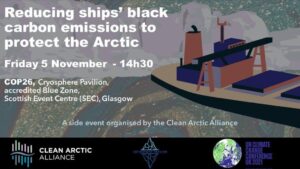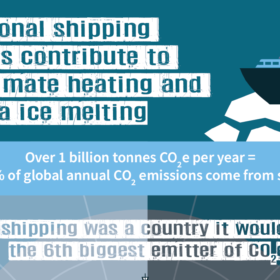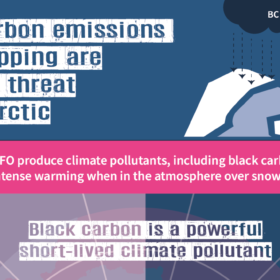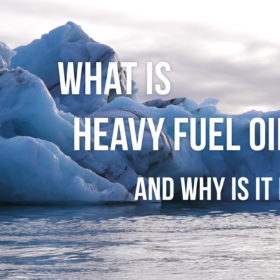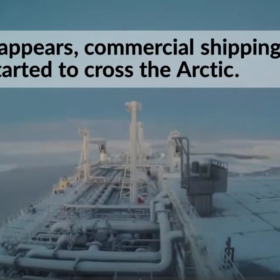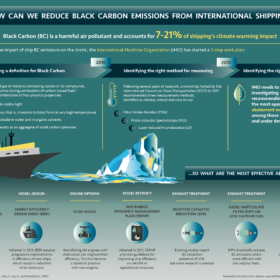New Clean Arctic Alliance Website
Heavy Fuel Oil
The Arctic is warming at an accelerating rate and as sea ice continues to melt away, Arctic waters are becoming increasingly navigable to vessels carrying heavy fuel oil (HFO). HFO, which is one of the world’s dirtiest fuels, is not only virtually impossible to clean up in the event of a spill, but also produces higher levels of air and climate pollutants than other marine fuels. Given the severe risks that heavy fuel oil poses to polar environments, the international shipping community has already banned its use in the Antarctic. It is now time to provide the Arctic, an ecosystem that is equally vulnerable to disturbance and pollution, with similar protection.
Risks of Heavy Fuel Oil use in the Arctic

Threat to Arctic
Heavy fuel oil (HFO) is an extremely viscous marine fuel that breaks down slowly in the marine environment, particularly in colder regions like the Arctic.

Unmanageable spill
In the event of a heavy fuel oil spill, lack of infrastructure, uncharted waters, severe weather conditions and navigational hazards such as sea ice, make spill response efforts nearly impossible.

Risk to indigenous residents
HFO spills pose a severe risk to many indigenous residents of the Arctic region that depend on marine resources for their nutritional, cultural, and economic needs.

Harmful pollutants
HFO produces higher emissions of harmful pollutants like sulphur oxide, nitrogen oxides, and black carbon, all of which have been linked to an increased risk of heart and lung disease and premature death. Switching from HFO to low-sulphur distillate fuel would reduce black carbon emissions by 30%-80%.

Accelerated warming
Black carbon has a potent climate warming effect when emitted at high latitudes. The warming impact is increased by at least a factor of 3 in the Arctic region as compared to emissions over the open ocean. This is because in the atmosphere, the black carbon particles absorb incoming radiation from above, as well as reflected radiation from below – doubling the warming impact.

Self-reinforcing warming cycle
When black carbon particles fall onto the Arctic snow and ice, radiation scattered from the snow and ice hits the deposited black carbon particles and causes further warming, plus the amount of sunlight reflected back into space is reduced. Snow and ice melt is accelerated increasing the surface area of exposed, dark ocean water, and promoting a self-reinforcing cycle of human-induced climate warming.
Pre-MEPC 77 Briefing: Arctic Warming – How Will IMO & Shipping Industry Respond to COP26 Outcome?
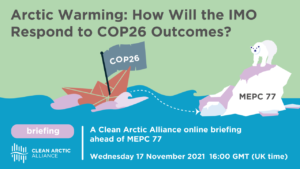 Pre-MEPC 77 Briefing: Arctic Warming – How Will IMO & Shipping Industry Respond to COP26 Outcome?
Pre-MEPC 77 Briefing: Arctic Warming – How Will IMO & Shipping Industry Respond to COP26 Outcome?
What are the implications for the IMO from COP26’s outcomes? What are the priorities for IMO member states regarding shipping’s impact on the Arctic and the world’s climate? How will the IMO react to curb black carbon and greenhouse gas emissions – both of which are on the agenda when its Marine Environment Protection Committee (MEPC 77) meets from 22-26 November. Watch the video here.
Read more »
COP26: Stop the Melt! World Leaders Must Stick to Paris Agreement to Halt Arctic Sea Ice Loss
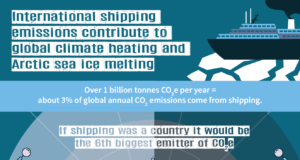 COP26: Stop the Melt! World Leaders Must Stick to Paris Agreement to Halt Arctic Sea Ice Loss
COP26: Stop the Melt! World Leaders Must Stick to Paris Agreement to Halt Arctic Sea Ice Loss
As world leaders gather for the COP26 UN climate summit in Glasgow, the Clean Arctic Alliance is calling for them to take action to preserve the crucial climate regulation ability of Arctic sea ice, by fulfilling the Paris Climate Agreement’s commitment to limit global heating to less than 1.5C
Read more »
COP26 Event: Reducing ships’ black carbon emissions to protect the Arctic Friday 5th November
COP26 Event: Reducing ships’ black carbon emissions to protect the Arctic Friday 5th November
Friday 5th November, 14.20 – in the Cryosphere Pavilion (Blue Zone), Scottish Event Centre (SEC), COP26, Glasgow
Speakers will address the Arctic cryosphere crisis, the implications for the people of the Arctic and the planet as a whole, implications for health and the role of shipping in reducing impacts through black carbon reductions.
Read more »
Arctic Sea Ice Minimum: UN Shipping Body Must Act On Black Carbon Emissions
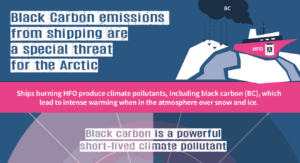 Arctic Sea Ice Minimum: UN Shipping Body Must Act On Black Carbon Emissions
Arctic Sea Ice Minimum: UN Shipping Body Must Act On Black Carbon Emissions
Responding to reports from the US National Snow and Ice Data Center (NSIDC) that summer ice has reached its 12th lowest ever extent, and that the amount of “multi-year ice (ice that has survived at least one summer melt season), is one of the lowest levels in the ice age record, which began in 1984”, the Clean Arctic Alliance called for urgent cuts to black carbon emission from shipping, ahead of the International Maritime Organization meeting MEPC 77 in November.
Read more »
Infographic: International Shipping emissions contribute to global climate heating and Arctic sea ice melting

Infographic: International Shipping emissions contribute to global climate heating and Arctic sea ice melting
If shipping was a country it would be the 6th biggest emitter of CO2.
Infographics: How Black Carbon Emissions from Shipping Impact The Arctic
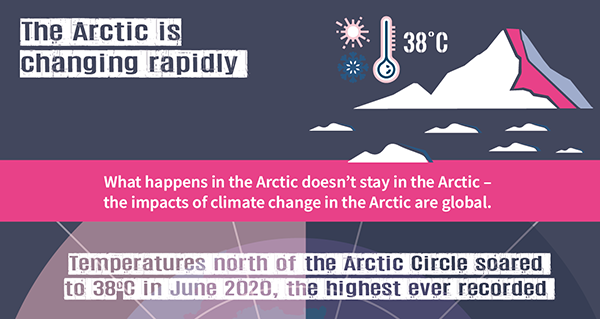
How Black Carbon Emissions from Shipping Impact The Arctic
A series of six infographics highlighting the problem and threats posed by black carbon from emissions from shipping, with emphasis on the Arctic. Find out why the effects of black carbon (BC) have more in the Arctic, the health implications for communities, why black carbon is increasing, and what actions are available to reduce BC emissions from shipping.
See full series »
Press Releases
Solutions
HFO is currently used for two discrete purposes in the Arctic. First, HFO is used as marine fuel for ships traveling through Arctic waters. Second, some Arctic communities use HFO to heat their homes and power equipment. Given these two distinct uses, any effort to mitigate the risks posed by the use of HFO in the Arctic must be accomplished through two separate approaches:
Addressing the risks posed by HFO as shipping fuel
Banningthe use and carriage of HFO for fuel in Arctic waters is the most direct mechanism for mitigating the numerous consequences of an HFO spill and reducing harmful emissions in the Arctic region. For example, switching from HFO to an alternative fuel, such as low-sulphur distillate fuel, is expected to reduce BC emissions by an average of 30 percent.
Addressing the risks associated with the carriage of HFO as cargo
In recognition of the dependence of some Arctic communities on HFO for household use, the Clean Arctic Alliance is not currently focused on the carriage of HFO as cargo. However, in order to address the risk of an HFO spill in Arctic waters, the carriage of HFO as cargo must be considered at a future time.
Banning the use and carriage of HFO for marine fuel is the most effective mitigation strategy and is a priority at this time. Accordingly, the International Maritime Organization, which is the appropriate international body to regulate the use and carriage of HFO, must adopt a legally binding instrument to ban the use of HFO as marine fuel in Arctic waters by 2020.


